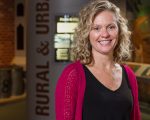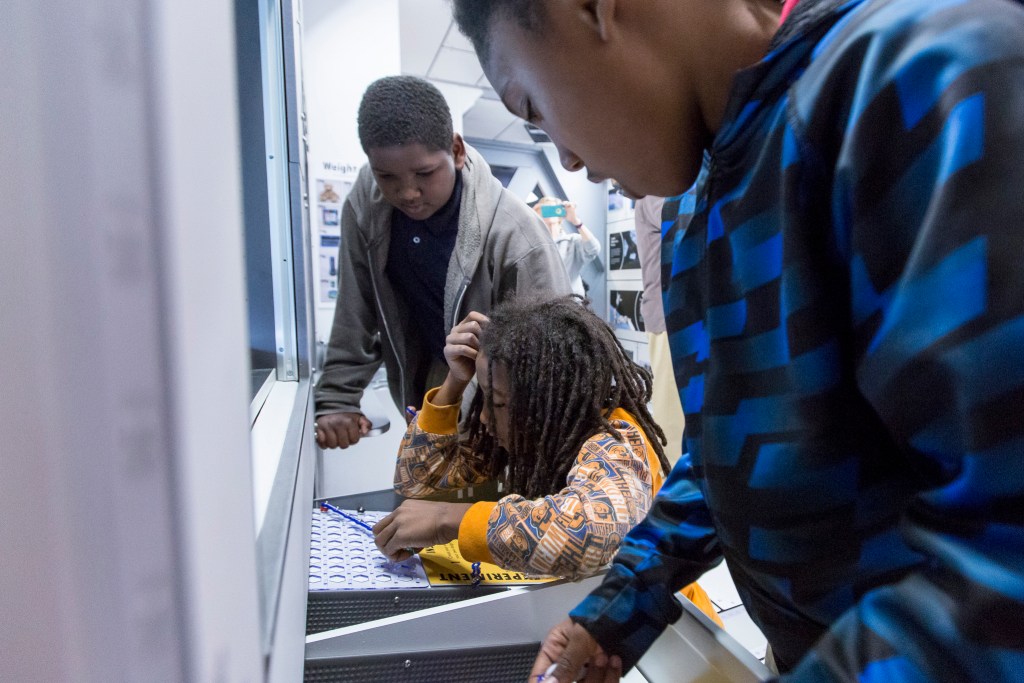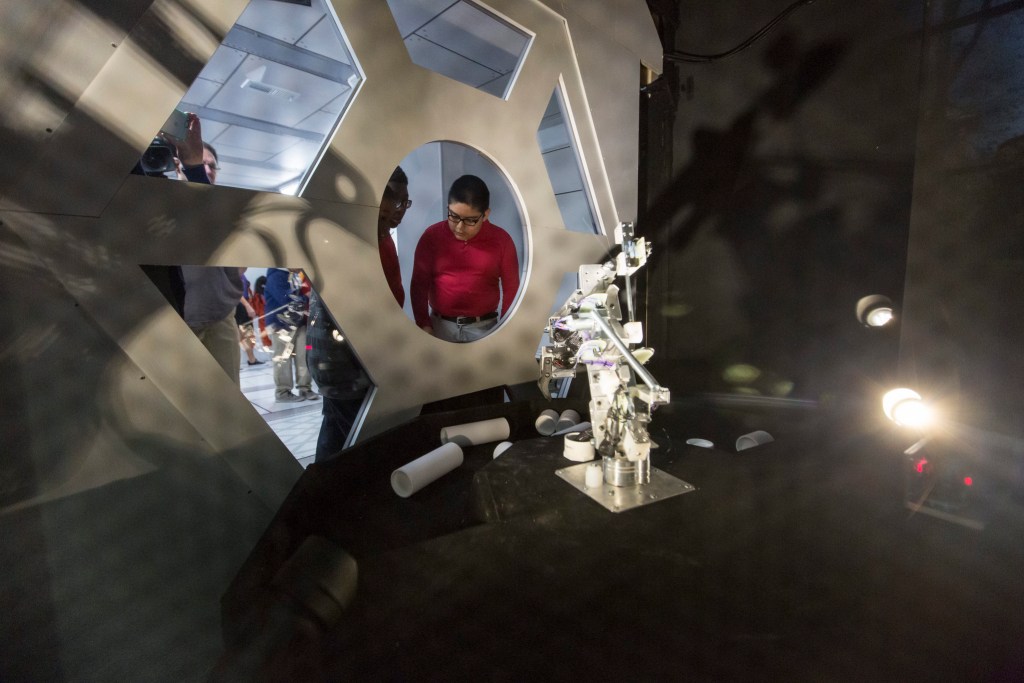
Pepper Hill is a museum educator at Cape Fear Museum of History and Science in Wilmington, NC.
 The Cape Fear Museum of History and Science recently opened an interactive experience, called Space Place, inspired by and modeled after the International Space Station—a spacecraft that orbits Earth where astronauts from around the world live and work. This is the story of how the museum got to outer space and about the fun we are having since we got there.
The Cape Fear Museum of History and Science recently opened an interactive experience, called Space Place, inspired by and modeled after the International Space Station—a spacecraft that orbits Earth where astronauts from around the world live and work. This is the story of how the museum got to outer space and about the fun we are having since we got there.
When the Museum consolidated and relocated the museum store, we looked to transform the retail space into a highly-interactive experience for students, families, and other visitors of all ages. We started planning by polling visitors on what kind of activities would they like to see in the museum. Since we were in a strategic-planning process, our consultant advised us to reach beyond the everyday experience. Many people have been on a bicycle or an airplane, but how many have been in a rocket? Space play was a top preference in our front-end evaluation so we began to consider space as a concept for the new experience.
As the planning team thought more deeply about where humans are today in terms of space travel, we agreed current initiatives are less about getting people into space and more about keeping them there. Space Place was inspired by the International Space Station (ISS), a working lab and temporary home to scientists from around the world. Funding was provided by GE Foundation. Our goal was to inform the public about research conducted on board the International Space Station, encourage visitors to explore how that work applies to their everyday lives, and inspire generations of enthusiastic space scientists.

Space Place is modeled after the Columbia module of the ISS, where most science experiments are conducted, and the Tranquility module, which serves as the living quarters. Along with GE Hitachi Nuclear Energy and GE Aviation volunteers, museum staff designed and renovated the former store with a rounded outer shell and two inner modules that are connected and perpendicular to each other. Stainless steel panels were added to the outside to mimic the exterior of the ISS. Activities were positioned similarly to the experiment racks on the ISS. We included some long-term components and some rotating experiments to keep the experience fresh. Space Place was developed to involve several levels of educational engagement. We included various learning styles, a broad targeted age range, and activities that groups and individuals could engage in.
The Cupola is a panoramic control tower for the ISS and a favorite spot for astronauts to enjoy a unique 360-degree view of Earth. From the Cupola, astronauts control the Canadarm, a 57-foot robotic arm on the exterior of the ISS. In Space Place, our large Plexiglas model of the Cupola has a three-foot robotic arm and is one of the most popular interactives.

To interpret living on the ISS, we built in a closet-size space and attached a hooded sleeping bag to one wall with Velcro. Children and adults love zipping themselves into the bag so they don’t float away while pretending to dream!
Other long-term components include a replica space garden, a user-friendly MicroEye with various specimens, a “what would you take to space?” activity, and astronaut costumes for children and adults. A short video interprets water recycling on the ISS with a sign that reads “Yesterday’s coffee is today’s coffee.” Space Place also includes two enclosed gloveboxes that visitors reach into with long mounted rubber gloves and manipulate small beads and wooden blocks. Another exciting element are live feeds from the ISS on three monitors. Visitors can get an astronaut’s view of Earth in real time, see the current location of the ISS, and listen to conversations between onboard scientists and ground control.

Rotating activities are contained in large metal drawers. Visitors can create a circuit to activate a lightbulb or a musical device as they examine how the ISS powers itself. They discover light reflection using a Blue Morpho butterfly specimen and experiment with ultraviolet light to explore how astronauts use the electromagnetic spectrum in research.
One of our favorite moments during the development of Space Place was a serendipitous meeting with Tony Pittman, a local public school graduate who visited the Museum during the construction process. He is now the ISS Payload Operations Manager stationed at Marshall Space Flight Center. The “Tony’s Story” panel gives the community a local connection to the ISS and shows visitors that you do not have to be an astronaut to work in space.
Space Place aligns perfectly with our established planetarium programs, was a huge hit at the adult program Museum After Dark: Outer Space, and is a popular draw for self-guided tours. We are having a blast watching visitors use the scientific method and their imaginations to step into the shoes of a space scientist!
About the Author
Pepper has specialized in family learning in museum settings for the past decade and loves developing fun ways to engage people of all ages and backgrounds in informal education. She is a graduate of University of North Carolina Wilmington where she majored in history and education. The majority of her projects involve science, technology, engineering, and math. Her contact information is phill@nhcgov.com or 910-798-4386.
Brought to you by Sage Xaxua Morgan-Hubbard, the American Alliance of Museums’ Ford W. Bell Fellow for Museums and P-12 Education.







